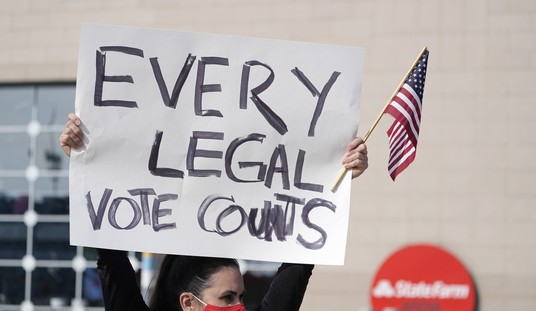Three summers ago, then-Treasury Secretary Tim Geithner penned a New York Times op/ed on behalf of his boss, triumphantly welcoming the American people to economic "recovery:"
Advertisement
The recession that began in late 2007 was extraordinarily severe, but the actions we took at its height to stimulate the economy helped arrest the freefall, preventing an even deeper collapse and putting the economy on the road to recovery. From the start, President Obama made clear that recovery from a crisis of this magnitude would not come quickly and that the recovery would not follow a straight line. We saw that this past spring, when the European fiscal crisis posed a serious challenge to the markets and to business confidence, dampening investment and the rate of growth here...While the economy has a long way to go before reaching its full potential, last week’s data on economic growth show that large parts of the private sector continue to strengthen. The economic rescue package that President Obama put in place was essential to turning the economy around. The combined effect of government actions taken over the past two years — the stimulus package, the stress tests and recapitalization of the banks, the restructuring of the American car industry and the many steps taken by the Federal Reserve — were extremely effective in stopping the freefall and restarting the economy...We suffered a terrible blow, but we are coming back.
That was August 2010. Geithner praised Obama's so-called "stimulus" package as "essential;" that $825 billion expenditure of borrowed money failed to satisfy
Recommended
Advertisement
(1) The official U-3 unemployment rate is 7.4 percent, barely changed from when Obama took office nearly give years ago. The more comprehensive U-6 unemployment figure is 14 percent. With a little context, the numbers look even worse:
If labor force participation were back at July 2012 level, the unemployment rate would 7.8%; 10.7% at Jan. 2009 level
— James Pethokoukis (@JimPethokoukis) August 2, 2013
(2) Speaking of the labor force participation rate, it's scraping three-decade lows, artificially improving the U-3 number. According to the Richmond Times-Dispatch, "the economy is still two million jobs shy of pre-recession employment levels."
(3) The long-term unemployed continue to suffer, with few signs of light at the end of the tunnel. The Wall Street Journal reports, "More than four years after the recession officially ended, 11.5 million Americans are unemployed, many of them for years. Millions more have abandoned their job searches...he recovery isn't reaching many of the most vulnerable."
Advertisement
(4) US consumer confidence remains mired in an upside-down malaise of pessimism.
(5) The new healthcare law is driving a sweeping trend toward temporary and part-time hiring. Since the beginning of this year, fully 97 percent of all US job growth has come via non-full-time jobs -- a staggering statistic.
(6) The first two quarters of 2013 have produced anemic GDP growth rates.
(7) Poverty rates are at a multi-decade high, plus food stamp usage and federal disability claims have also reached record levels. As of last year, the uptick in the latter category had outpaced all private sector job growth since 2009.
(8) The president's economic dreadful approval rating is stuck in the mid-30's. America's right track/wrong track numbers remain horrific at 29/64. If the long-promised recovery has arrived, most people aren't feeling it. Tomorrow's job report may breathe some life back into the country's dour economic mood, but the fundamentals of a real recovery -- the sort of turnaround the White House has alternatively hailed and predicted for years -- just aren't there.

























Join the conversation as a VIP Member